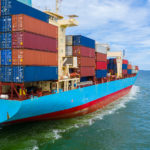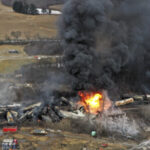A tourist bus slammed head-on into a concrete wall in a Swiss Alps tunnel, killing 28 people, mostly children returning from a ski vacation. Swiss police said Wednesday the vehicle was not speeding and everyone was wearing seat belts.
The bus was carrying students about age 12 from two different Belgian schools when it crashed shortly after 9 p.m. Tuesday night on a highway near the southern town of Sierre, Switzerland.
The horrific accident in the short Tunnel de Geronde left the front of the bus mangled, trapping people inside. Twenty-two school children and six adults including the driver were killed and another 24 children were hospitalized in what the police chief described as a “scene like a war.”
Belgium flew anxious parents and relatives to the site and called for a day of mourning.
Authorities were still trying to work out how a modern bus, a rested driver and a safe tunnel could add up to such a tragedy.
A Swiss prosecutor said video cameras in the tunnel captured the accident. Olivier Elsig, prosecutor for the canton of Valais, told reporters the children on the bus were wearing seat belts, no other vehicle was involved and it was not speeding.
Speaking at a news conference Wednesday in Sion, the capital of Valais, he said investigators were looking at three possible causes for the crash – a technical problem with the bus, a health problem with the driver, or human error.
He said the seatbelts wouldn’t have helped much due to the severity of the crash and an autopsy will be performed on the driver.
“We will examine everything to find out what happened,” Elsig promised.
Dr. Jean-Pierre Deslarzes, medical director of the cantonal rescue service OCVS, said rescuers were traumatized because so many of the victims were children.
“We found an apocalyptic situation when we arrived,” said Christian Varone, the police commander for Valais, who called the tunnel “safe.”
Police said 21 of the dead were Belgian and seven were Dutch. Of the injured, 17 are Belgian, three are Dutch, one is German, one is Polish and two others have yet to be identified.
Deslarzes said 14 of the injured remain in a hospital in Sion, one in intensive care, but none had life-threatening injuries. Three others were taken to Lausanne University Hospital with serious injuries, he said, while another child was in a hospital in Bern.
“My first thoughts go to the victims and their families,” Belgian Prime Minister Elio Di Rupo said.
Swiss President Eveline Widmer-Schlumpf also flew to Sion to pay her respects to the victims, survivors and rescue officials. The Swiss parliament held a minute of silence for the victims.
Widmer-Schlumpf assured Belgium her country would do everything in its power to support the injured and the families of the dead. A crisis center was set up for families.
The crash occurred in a stretch of tunnel where the speed limit was 100 kph (62 mph). In the tunnel, it veered, hit a curb, then rammed into a concrete wall in an emergency stop space, police said. The highway was closed in both directions as 200 rescuers were called to the scene.
The Top Tours company, based in Aarschot, about 25 miles (40 kilometers) northwest of Brussels, was in charge of the bus that crashed. A woman who answered the phone at the company’s offices declined to comment, but Belgian Transport Minister Melchior Wathelet said it has a good safety record.
“The company has an excellent reputation. The drivers had arrived (in Switzerland) the night before and rested on the day before the departure. It seems that the rules regarding driving and rest time were respected,” said Wathelet. He added the bus that crashed was relatively new.
Two other buses, carrying students from schools in the Belgian towns of Beersel and Haasrode, arrived safely back in Belgium on Tuesday, apparently without having seen the accident.
Police said the students spent the last few days at a ski camp and were on their way back to the Belgian provinces of Brabant, Flanders and Limbourg. While they were there, students at one school kept a blog that brimmed with enthusiasm.
“Today was totally the best,” one girl wrote. “The adventurous walk was tiring but mega-cool. We won first prize for cleanest room. Tomorrow it’s going to be colder. Byyyeeee!”
One teacher posted a note after five days to reassure parents back home. “For now we do not see much homesickness,” the teacher wrote. “But from the reactions of the children we gather that they miss you a little bit.”
The bus was carrying students from two towns – Lommel, east of Antwerp, and Heverlee, near Leuven.
The Alpine city of Sierre is a gateway to the Val d’Anniviers tourist region and is connected to the Crans-Montana ski resort by funicular railway. On Wednesday, the peaks towering above valley that had drawn the students were wrapped in clear blue skies and balmy weather.
The 2.5-kilometer (1.5-mile) tunnel opened in 1999. German automobile club ADAC gave it the second-best of six ranking levels in 2005. Several individual aspects won top ranking, but the emergency management system was deemed “inadequate,” the second-lowest level.
The previous worst accident in a Swiss highway tunnel happened in 2001, when two trucks collided in the Gotthard tunnel, killing 11 people.
One of Europe’s most tragic tunnel accidents happened in March 1999, when 39 people were killed after a truck caught fire in the Mont Blanc tunnel between France and Italy. The blaze burned for two days while firefighters tried to reach victims and vehicles.
At midday Wednesday, the blog of the Sint Lambertusschool in Heverlee was still online, showing kids smiling and frolicking amid the snow.
“Things are super here in Saint-Luc. The skiing, the weather, the food. Its all not bad at all,” one boy posted on Saturday. “Tomorrow I play in the Muppet Show. … I’m now reading the book ‘Why Dogs Have Wet Noses.’ Very interesting! I miss you all.”
(Melvin reported from Brussels. Frank Jordans in Geneva, Raf Casert in Heverlee, Belgium, and Robert Wielaard in Brussels contributed to this report.)
Was this article valuable?
Here are more articles you may enjoy.

 Viewpoint: Striking Risk-Reward Balance for Shipping Lithium-Ion Batteries
Viewpoint: Striking Risk-Reward Balance for Shipping Lithium-Ion Batteries  Tesla Settles Over Fatal Autopilot Crash on Eve of Trial
Tesla Settles Over Fatal Autopilot Crash on Eve of Trial  Norfolk Southern to Pay $600 Million to Settle Ohio Spill Case
Norfolk Southern to Pay $600 Million to Settle Ohio Spill Case  National Crime Report Shows Vehicle Thefts Surged to More than 1 Million in 2023
National Crime Report Shows Vehicle Thefts Surged to More than 1 Million in 2023 